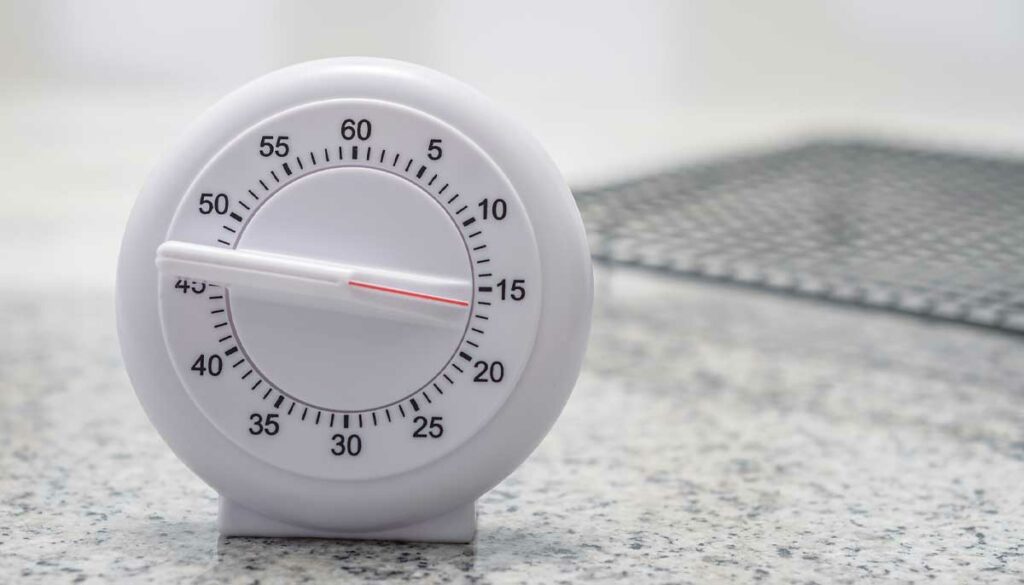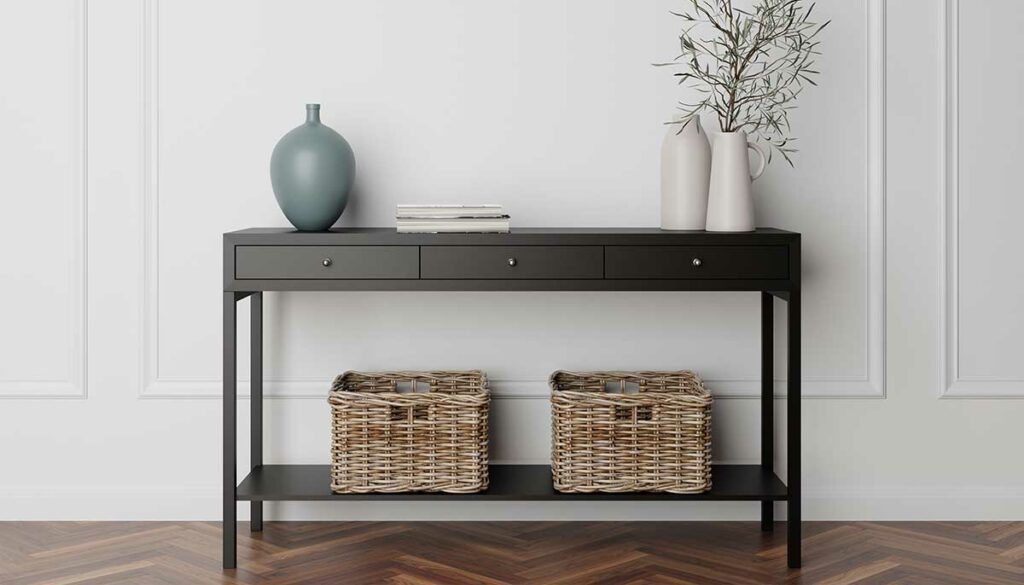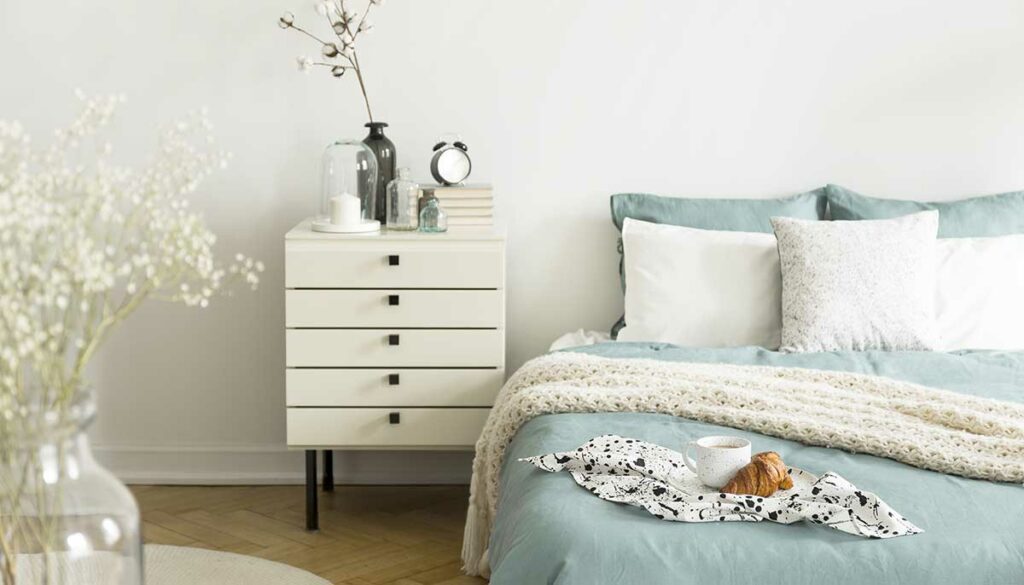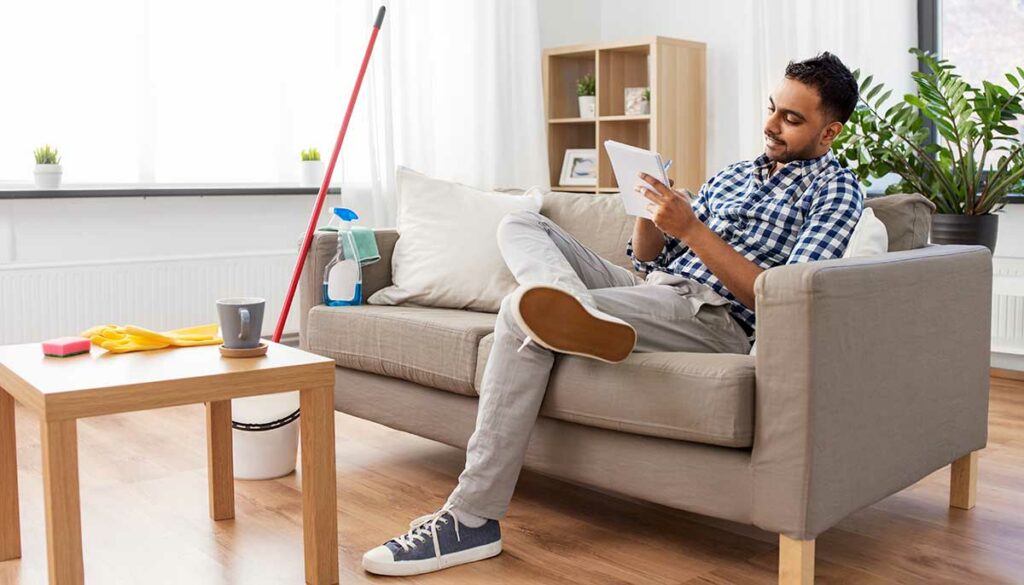A new year brings the opportunity for a fresh start, so why bring all that extra clutter with you?
We often make all kinds of resolutions that include getting in shape or saving up for a big purchase, but what about our homes? An organized, decluttered home can give us the space – both physically and mentally – to achieve our goals.
But where do you start? If your home is disorganized, it may be overwhelming, to say the least. How do you tackle it all? And what do you do if you’re short on time?
These tips and tricks will have your home organized and decluttered in no time!
Differentiate Between Needs and Wants
Having a list of tasks to accomplish is a great way to get started, but it is also a great idea to separate that to-do list further: into needs and wants.
There are so many things I’d like to clean and organize, if I only had more hours in my day. Sounds familiar, right? That’s exactly why you need to decide what’s actually necessary, and what is more of a “this would be nice to get done” item. It will help keep you from feeling overwhelmed by too many tasks, and will help you use your time efficiently.
Clearly, you’ll want to start with the “needs to get done” task list first. Once you’ve checked off those items, you can start on the “wants” list.
Setting a Timer

It’s easy to get overwhelmed when you are staring down a messy home. To prevent that and stay motivated, use a timer! Setting a timer is a great productivity hack when it comes to other areas, like office work or studying, and it also works well for cleaning. It helps keep you on task if you’re finding it difficult to focus.
Developed in the late 1980s, the Pomodoro Technique is a time management method that breaks work into intervals separated by short breaks. It was originally developed for studying, but this technique works in tons of different applications.
Try it the next time you’re cleaning and organizing. Set a timer for 25 minutes, and use that allotted time to focus on a single task. Once the timer goes off, take a short break. After the break is over, set a 25-minute timer again, and use that time for a new task. Try to focus and accomplish a single task while the timer is ticking.
Sometimes, you don’t even need to set a short timer. There are plenty of points during the day that you can treat as a timed cleaning/decluttering session. For instance, tidy up the kitchen counter while you wait on that pot of water to boil.
Everything Needs a Home
When things don’t have a designated “home,” they become a big mess. And it’s a mess that keeps happening, over and over again.
Think about it. If you are staring down a bunch of clutter in your home, it is a bunch of stuff that doesn’t have a designated place, isn’t it? That’s because clutter is simply a bunch of things that we failed to return to where they belong.
In order to cut the clutter, everything needs to have a designated home where it lives. If it doesn’t have a home, you need to make one or get rid of the item!
Easy and Simple Storage Solutions

Speaking of finding designated homes for items, you’ll need storage solutions to accomplish that. It needs to be something that is easy to use. You don’t want to feel burdened by putting things away – otherwise, you’ll never put things away and end up buried in clutter again!
Just ask Marie Kondo. She says that “storage should reduce the effort needed to put things away, not the effort needed to get them out.”
I tend to use decorative bins and baskets. Bins and baskets are extremely easy to just toss things into. And by choosing something decorative, it keeps everything hidden inside while also looking nice enough that the storage basket itself doesn’t need to be hidden. I can slide it onto the shelf in plain view, and guests have no idea that it is filled with extra cables and wires.
Have a bowl or tray by the front door to keep keys, change, or odds and ends that come out of your pockets. In the family room, use a tray or caddy to house remote controls. And yes, it’s okay to have a junk drawer – just keep it to one drawer, and try to limit it to a small one.
Get Creative With Storage

Since everything we own needs to have a designated home, you might need to get a little creative with finding storage. This is especially true for anyone living in a smaller home, like an apartment.
Utilize the space that you have. Storage-friendly furniture, aka furniture with built-in storage solutions, is a great way to do this. Instead of a table for a nightstand, opt for one that has drawers. Stash your book, eye mask, and any other bedtime necessities inside instead of letting them pile up on top of the nightstand. This also applies to end tables, ottomans, buffets, benches, and the like.
Don’t forget about all that space that you aren’t otherwise using, such as under the bed. It is a great spot for items you may not need on a daily basis. Pick up some under-bed storage bins for winter clothes, dress shoes, keepsakes, or even seasonal decorations. I also use this area to store bed linens because we do not have a hall closet for them.
Have a Designated Donation Spot
I have kids that outgrow clothing on what seems like a daily basis. On top of that, I always seem to find something in the back of my closet that I haven’t worn in ages, and it’s just taking up space. So, all these things get donated, right?
…But what do you do with them while they’re piling up?
Stick a large cardboard box in the back corner of your closet. Each time you discover something that you no longer need or can’t wear, toss it in the box. Once the box is full, close it up and drive it to a local donation center or charity. Replace the box in your closet, and start all over again! It’s also a great way to reuse all those Amazon boxes.
If you don’t have a regular supply of large cardboard boxes (I’m looking at you, Amazon addicts), you can always use a storage bin and dump the accumulated items into a heavy-duty trash bag when they’re ready for donation.
Okay, More Boxes

Boxes truly are your best friends when it comes to cleaning and decluttering. This time, we’re going to use three boxes to help declutter a specific room or closet. Label each box: the Keep Box, the Donate Box, and the Toss Box.
As you go through your items one by one, place them in one of the three boxes. Evaluate each item individually, and really ask yourself how often you use it or if you really have a sentimental attachment. As Marie Kondo would ask, does it spark joy? Try to use your gut feeling, and don’t overthink it. Once your boxes are full, you can deal with each box one at a time.
Clearly, you’ll be trashing everything in the Toss Box, and the Donate Box gets taken to a local donation center or charity.
Once you get to the Keep Box, you’ll need to find homes for everything. Items that you use on a daily or weekly basis need to be put away in their designated spots. Seasonal items or other things that are used less often should get put away in long-term storage, such as the attic or in the top of the closet.
Only Declutter One Area at a Time
It always seems like there are more hours in a day than there really are. Plus, there may be more to do than you initially think! Trying to tackle an entire house in one day is likely not possible, and planning to do it will leave you overwhelmed, and then later you’ll be disappointed that you didn’t reach your goal.
Instead, start with one room. Or, if a room is too large or cluttered, anchor yourself in one area of the room at a time. This will prevent you from getting overwhelmed and will help you focus. Once you are done with your designated area, empty your boxes and start decluttering a new area!
Make a Long-Term Plan

All of these tips and tricks for organizing and decluttering are great, but they won’t help you in the long term unless you make continuing plans.
Make a commitment to staying organized so that things don’t pile up again. Establish daily, weekly, and monthly routines to ensure mundane tasks are accomplished regularly. Delegate tasks to other members of the household. Track your progress so that you can see a chain of success, and then celebrate that success!













